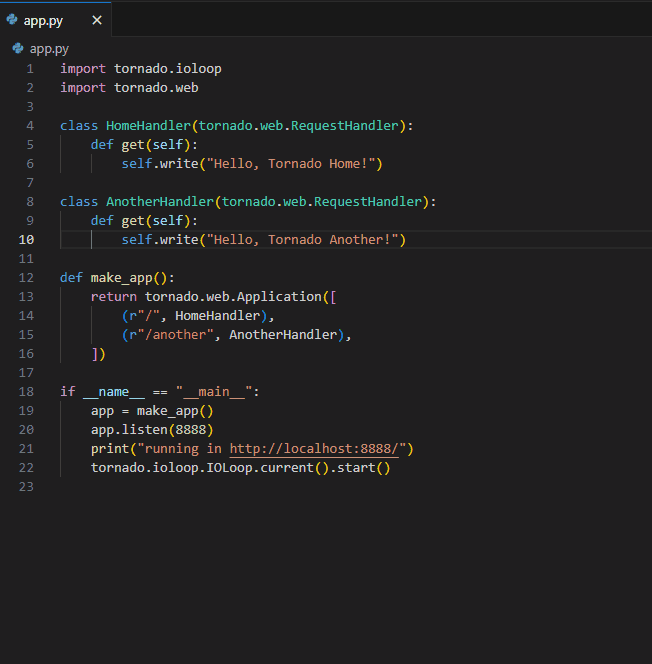
|
|
Tornado is a robust Python asynchronous networking library and web framework, is available as an open-source project. Given that it is made to manage non-blocking, asynchronous processes, it is appropriate for developing high-performance, scalable web apps. Since its creation, Tornado—which was first created by FriendFeed—has been well-known for its ease of use, quickness, and ability to handle stable network connections.
Key features of Tornado:
Lets create a basic tonado project:Step 1 : Make sure Python is set up on the machine or From the Python website, we can get the most recent version. To check python installed or not run this command >> python --version
Step 2 : Now, we have to install tornado framework, by using this command >> pip install tornado
Step 3 : After the installation now we have to create a app.py and write some basic code in it. Python
Step 4 : Now the project has been created. now the project is ready to serve. To run the development server follow this command. >> python app.py
The project runs successfully to see that open the serving URL(http://localhost:8888/) and open it on the browser. In this project, the HomeHandler responds with “Hello, Tornado Home!” when the root URL (“/”) is accessed.  output The output shown in the browser upon launching the Tornado program is seen in this screenshot. ConclusionIn conclusion, By exploring Tornado Framework is uncovered the robust and versatile toolsets for web application. Whether you’re building a small-scale application or a complex, real-time system, Tornado’s capabilities and performance optimizations make it a framework worth exploring and integrating into your development toolkit. |
Reffered: https://www.geeksforgeeks.org
| Geeks Premier League |
| Related |
|---|
| |
| |
| |
| |
| |
Type: | Geek |
Category: | Coding |
Sub Category: | Tutorial |
Uploaded by: | Admin |
Views: | 13 |